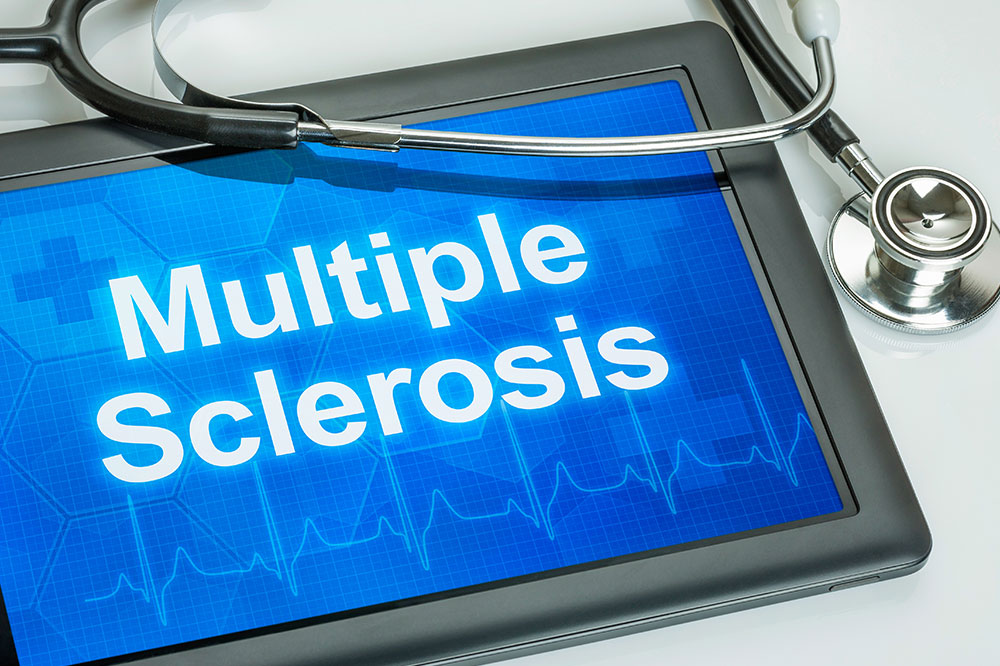
Multiple sclerosis – Causes, signs, and management options
Multiple sclerosis is characterized by the destruction of the myelin sheath, a fatty covering around the nerve cells meant for their protection. The condition affects the CNS, meaning both the brain and the spinal cord are impacted, giving rise to various symptoms. Multiple sclerosis is a chronic disease, and its impact on a person’s life can be severe. But in most cases, it is possible to manage the symptoms with available treatments.
Causes
While the exact cause of multiple sclerosis is unknown, certain factors have been found to make a person more susceptible to the condition. These factors are often considered causative factors or risk factors:
Genetics
Researchers have found that a few genes are associated with the development of the disease. So, if a person’s family member or relative has been diagnosed with the condition, they are at a greater risk. Some studies suggest that the type of genes involved may help determine the type and severity of the condition one develops.
Geography
Low levels of vitamin D in the body can increase one’s susceptibility. As a result, the population of multiple sclerosis patients is higher in regions farther from the equator than in the tropical region. This is because sunlight is a significant source of vitamin D for the human body. The vitamin is also required for proper immune system functioning and development.
Demographics
It is believed that a person’s age, ethnicity, and gender can contribute to their risk of developing multiple sclerosis. For example, people between 20 to 50 years have the highest risk of RRMS, a common type of multiple sclerosis. Similarly, the condition is found to be more prevalent in women than men. In terms of ethnicity, people of Northern European descent are more susceptible.
Factors like poor lifestyle habits and specific viral infections can also increase the risk of multiple sclerosis.
Signs and symptoms
It is easier to treat and manage multiple sclerosis if caught early. However, to seek early treatment, one must be aware of the condition’s signs and symptoms:
Blurry vision
Since multiple sclerosis affects the brain and the optic nerve, it can lead to blurry vision, partial vision loss, and even double vision.
Movement problems
The brain and the spinal cord are responsible for movement, balance, and coordination. Degeneration of the nerve cells’ myelin sheath damages the CNS, leading to problems with balance and conditioning.
Fatigue
Prolonged weakness and fatigue can be a sign. If fatigue lasts for weeks, it is prudent to consult a doctor and rule out serious underlying issues.
Numbness
Nerve cells transport signals and messages throughout the body. Since this disease damages nerve cells, it impacts their function. At times, there might not be any transfer of signals, which can cause numbness. It is one of the most common symptoms of multiple sclerosis.
Cognitive changes
The disorder can significantly affect a patient’s cognitive functioning. For example, it can cause problems with concentration and verbal fluency and even make recognizing faces a task.
Squeezing sensation
The squeezing sensation of the torso, or the “MS hug,” is one of the most common signs. It is often described as a girdle or a blood pressure cuff squeezing the patient’s torso.
There are numerous other symptoms too. But not all signs are present in every patient, and each individual might show varying degrees of severity.
Diagnostic tests
No specific procedure or test can provide a multiple sclerosis diagnosis. Doctors often conduct tests to rule out the possibility of other conditions that could be causing similar symptoms. They inquire about the patient’s and their family’s health history and then look for vision changes, balance issues, abnormalities, weakness, limb strength, and speech changes to identify the cause.
Treatment options
The condition cannot be cured, and treatment only helps manage the symptoms better to improve the patient’s quality of life. Doctors may prescribe treatments to keep the frequency and intensity of flare-ups in check and prevent unnecessary immune system attacks. A few other treatment options include:
Plasmapheresis
When patients do not positively respond to traditional treatments, they are treated with plasma exchange, also known as plasmapheresis. It helps remove specific proteins from the blood that attack the body, causing worsening symptoms or sudden, severe attacks. During this procedure, the patient’s blood plasma is extracted, and the plasma from a donor is supplied to them.
Muscle relaxants
Muscle relaxants are prescribed to manage pain and stiffness and control muscle spasms, especially in the legs.
Other possible treatment options include physical therapy to maintain mobility and balance and deep brain stimulation to help with tremors and better manage the condition’s progression.




